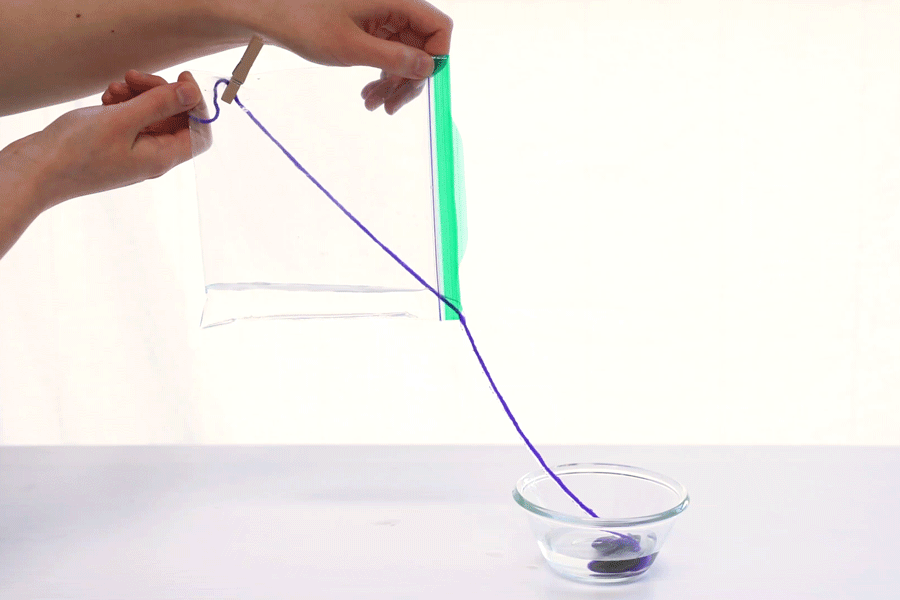Step-by-step tutorial
Step 1
Gather your materials.

Step 2
Soak the yarn in water for a minute or two.
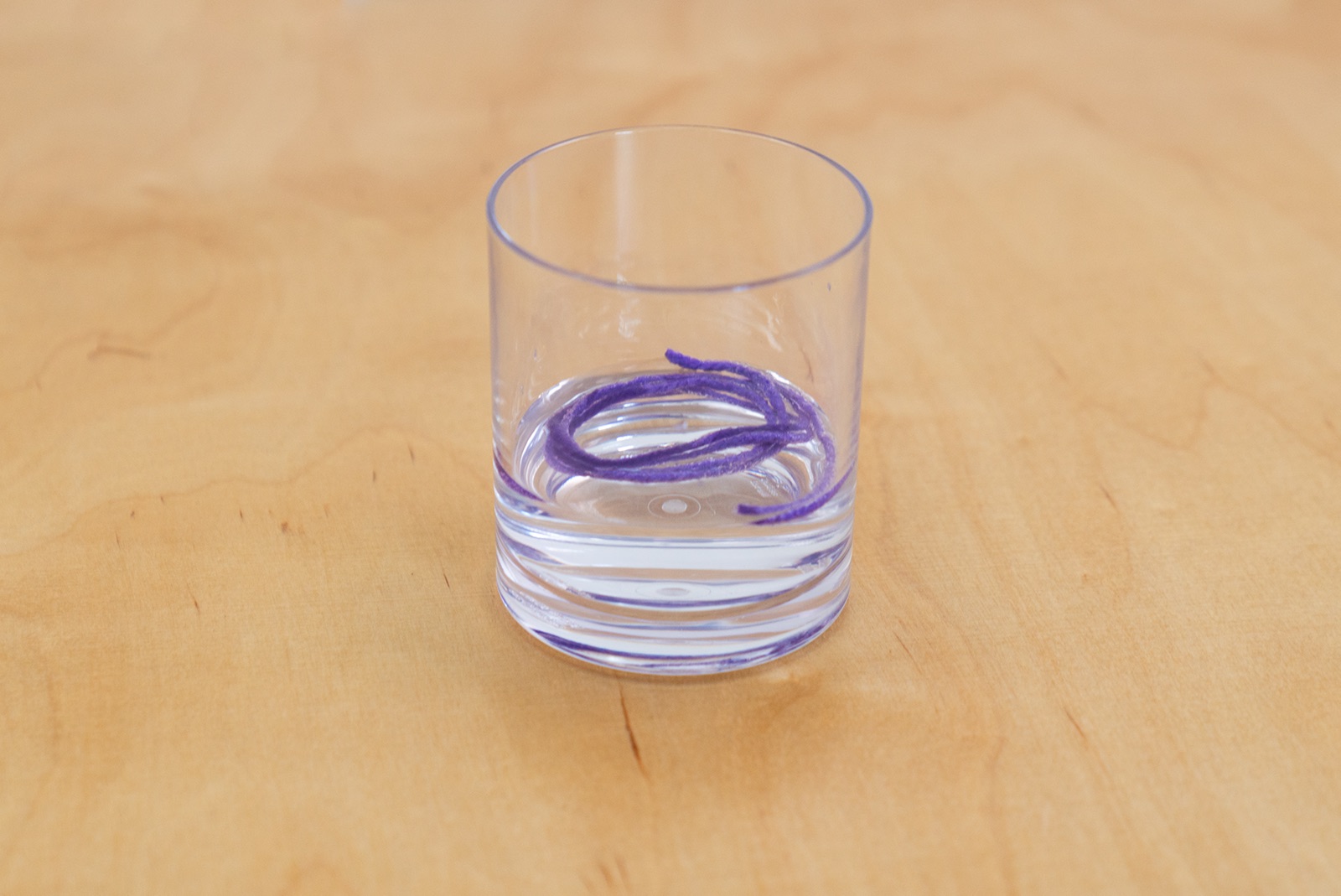
Step 3
Using a clothespin or binder clip, secure one end of the wet yarn to the inside cornerof a Ziploc® brand sandwich bag.
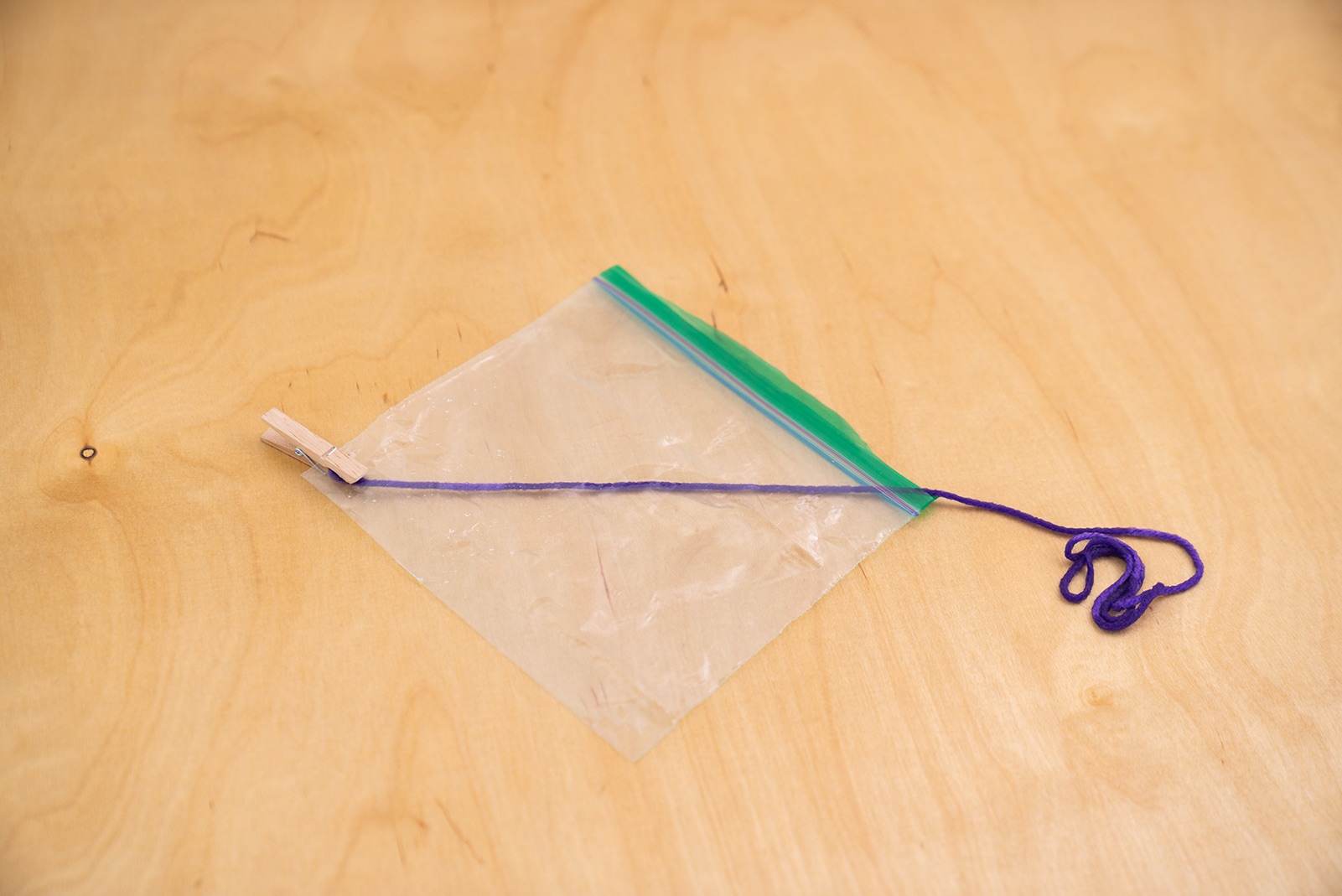
Step 4
Tie the other end of the yarn to a weight or a rock.
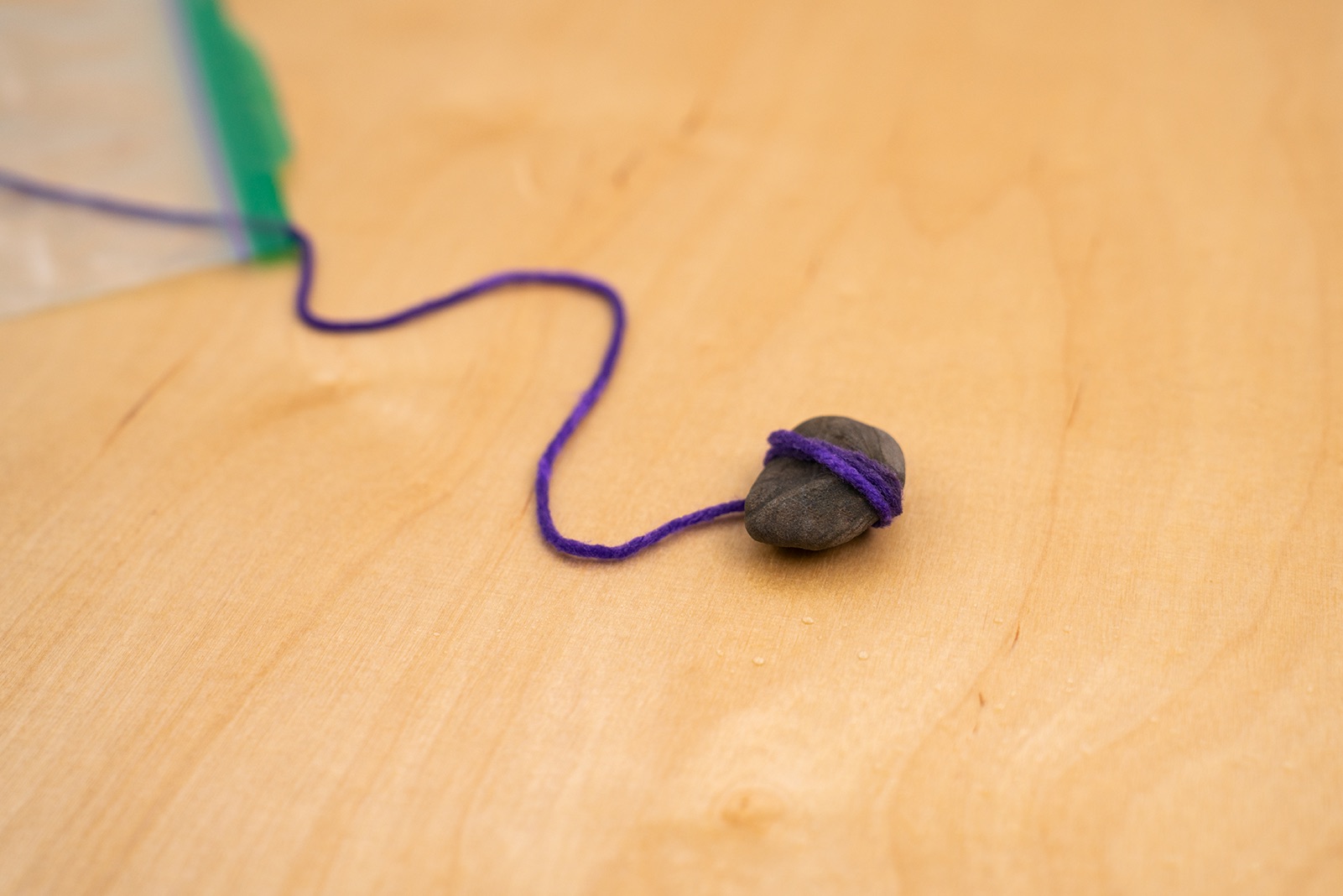
Step 5
Place the baking sheet on a flat surface. Over the baking sheet, fill the bag about halfway with water (avoid filling the bag beyond half its size). Place the rock in a cup or bowl, then move the bag and the bowl apart until the string is taut.
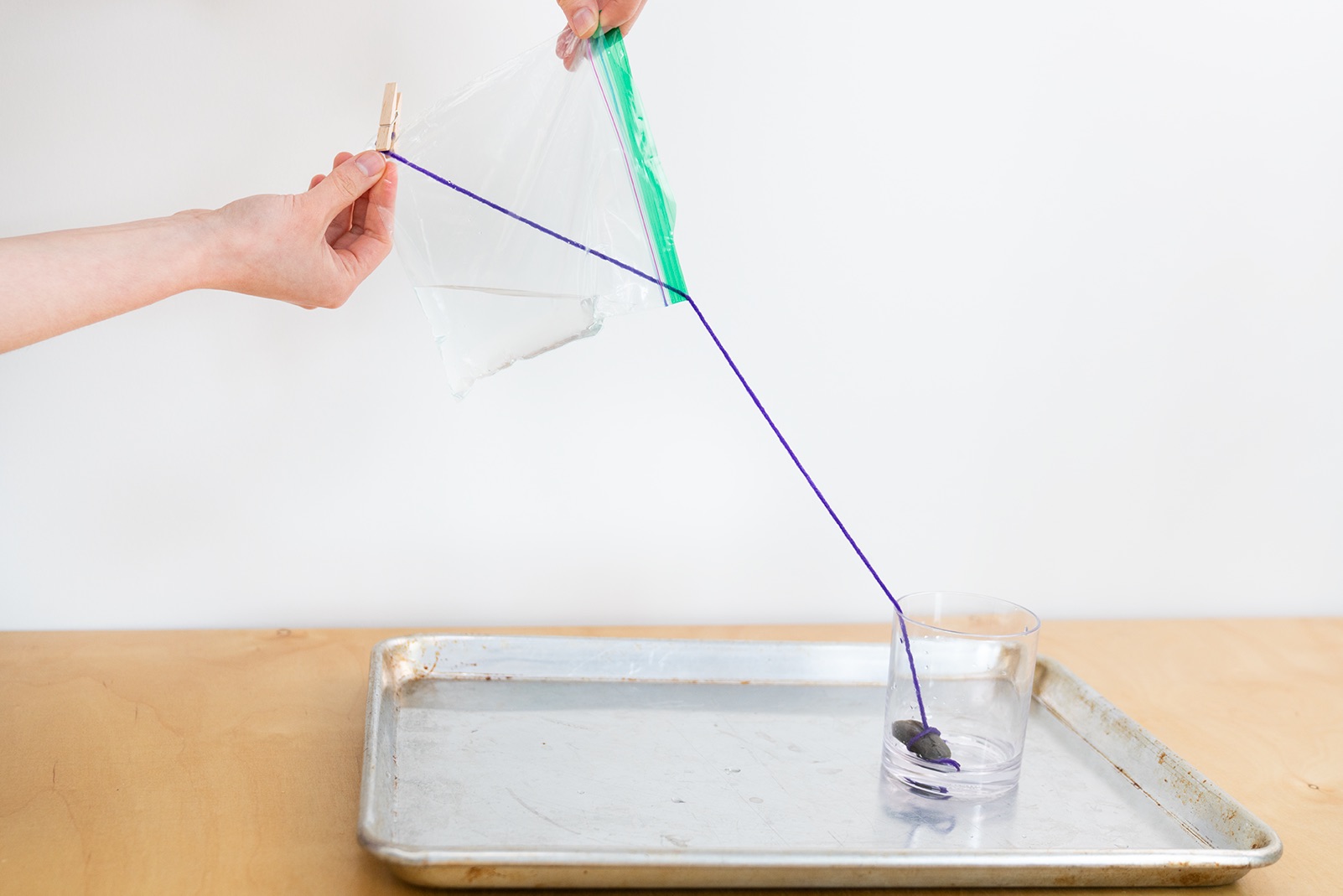
Step 6
The yarn should be trailing out of one corner of the bag opening. This side will be your spout. Tip the bag over slightly (while keeping the string taut) so the water starts to pour. Watch as the water flows out of the bag and follows the length of string. Try different types of materials. Can you find something that works better than yarn?
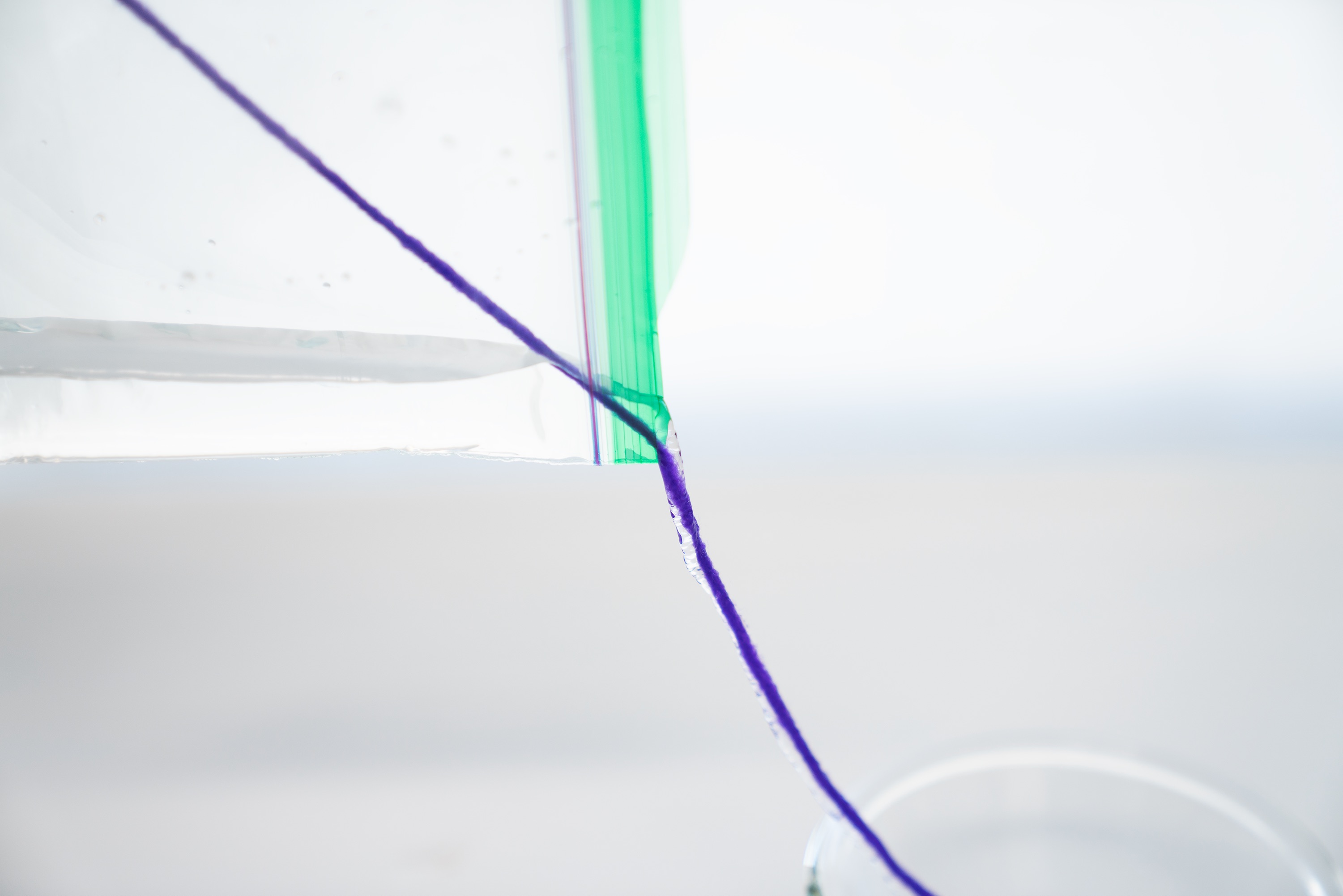
Learn more
With a piece of yarn, we can see the adhesive and cohesive properties of water in action. Water likes to stick to surfaces or objects (this is called adhesion), which is why a piece of yarn will emerge wet after being submerged in water. Water molecules also like to stick to each other (this is called cohesion), which is why water poured from a bag will cling to the wet yarn and follow the length of the string in a gravity-defying stream. Yarn works really well for this experiment because it retains water. Nonabsorbent materials (like thin string, lanyard, or curling ribbon) might not work as well. Try it out and see! Can you find a material that works even better than yarn?
